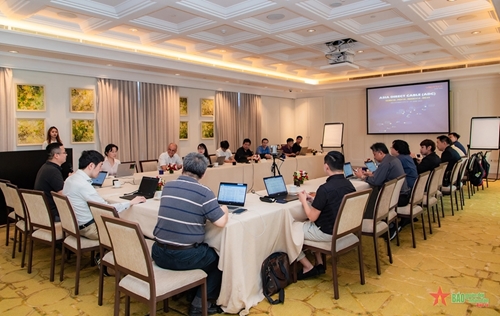The conference was attended by eight investors, namely NT, China Telecom, China Unicom, PLDT Inc., Singtel, SoftBank Corp., Tata Communications, Viettel, and contractor NEC. The main focus of the conference was to address obstacles encountered during the deployment process, with the goal of making the cable route operational by early 2024.
    |
 |
|
An overview of the conference |
During the conference, investors reviewed the project's progress, discussed technical and commercial topics, and approved the installation plan for the remaining landing stations. The expected completion time for the cable's landing station in Singapore, the final landing point of the ADC project, was also determined. Additionally, plans for integration, testing, project acceptance, personnel training at the landing stations, as well as terms and adjustments related to the rights and responsibilities of ADC system member partners, were discussed to ensure the overall progress of the project.
Previously, in 2022, Viettel officially announced the landing of the international submarine cable route ADC in Quy Nhon, Binh Dinh, Vietnam. This cable route is connected to the three largest IP hubs in the Asia region (Hong Kong, Japan, Singapore) and is the submarine fiber optic cable with the largest bandwidth capacity in Vietnam.
According to the Ministry of Information and Communications, the construction of new submarine fiber optic cables is necessary to accelerate Vietnam's goal of becoming a digital hub in the region. Therefore, Vietnam needs to develop an additional 4 to 6 new cable routes by 2030, and Vietnamese telecommunications companies need to take the lead, represent investment groups, and conduct the search, evaluation, and investment proposal processes.
As the only enterprise in Vietnam investing in the ADC cable route and owning the landing station in Quy Nhon, with a capacity of 18Tbps of international connectivity, Viettel has become the largest international connectivity infrastructure provider in Vietnam.
The Asia Direct Cable (ADC) is a submarine cable route approximately 9,800km long, connecting China (Hong Kong and Guangdong province), Japan, the Philippines, Singapore, Thailand, and Vietnam. The ADC cable system, designed with 8 fiber pairs (FP) and a transmission capacity of over 140 Tbps, allows for high-capacity data transmission across East Asia and Southeast Asia.
This submarine fiber optic cable utilizes the most advanced transmission technology, enabling the connection of countries in the Asia-Pacific region, with an initial investment capital of USD 290 million. The ADC cable has the ability to support bandwidth-demanding applications, thanks to technological advancements in areas such as 5G, cloud computing, the Internet of Things, and artificial intelligence.
Translated by Song Anh